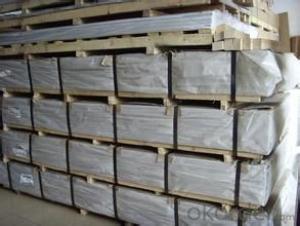Solar Edge Inverter Spec Sheet
Solar Edge Inverter Spec Sheet Related Searches
Decorative Ceiling Plate For Light Fixture Ceiling Plate For Hanging Light Fiber Sheet For Roof Plastic Wall Coverings For Bathrooms Plastic Corner Protectors For Furniture Decorative Lights For Ceiling Plastic Netting For Gardens Ceiling Brackets For Lights Hanging Ceiling Chairs For Bedrooms 42 White Ceiling Fan With LightHot Searches
Solar Edge Inverter For Sale Fiberglass Scaffolding For Sale Fiberglass Panels For Sale Fiberglass Greenhouses For Sale Type Of Scaffolding With Pdf Solar Inverter With 2 Battery Pedestal Fan With Water Spray Price Mini Inverter With Battery Online Shopping Solar Edge Inverter Price Ceiling Fan Lowest Price Solar Edge Inverter Sizes Pvc Chairs For Sale Plastic Roof Tiles For Sale Heavy Duty Plastic Chairs For Sale Plastic Sheets For Sale Fiber Sheet Price In India Gypsum Board Price Per Sheet In India pvc pipe manufacturers in usa Stainless Steel Sheet Near Me Plastic Fiber Sheet PriceSolar Edge Inverter Spec Sheet Supplier & Manufacturer from China
Okorder.com is a professional Solar Edge Inverter Spec Sheet supplier & manufacturer, offers integrated one-stop services including real-time quoting and online cargo tracking. We are funded by CNBM Group, a Fortune 500 enterprise and the largest Solar Edge Inverter Spec Sheet firm in China.Hot Products
FAQ
- The role of a cooling system in a solar inverter is to regulate and maintain optimal operating temperatures to prevent overheating. This is crucial because excessive heat can degrade the performance and lifespan of the inverter, leading to reduced efficiency and potential failure. The cooling system helps dissipate heat generated by the inverter's components, ensuring smooth and efficient operation, and ultimately enhancing the overall reliability and longevity of the solar inverter.
- A solar inverter handles anti-islanding protection by constantly monitoring the grid voltage. If the grid goes down or voltage drops below a certain threshold, the inverter automatically disconnects from the grid to prevent feeding power back into the grid during an outage. This ensures the safety of utility workers and prevents damage to the grid.
- The potential risks of electrical shock from a solar inverter include accidental contact with live electrical components, inadequate grounding or improper wiring, and failure to follow safety precautions during installation or maintenance. Additionally, poor maintenance, lack of training, or using faulty equipment can further increase the risk of electrical shock.
- A solar inverter is equipped with various protective features to handle grid faults and disturbances. It continuously monitors the grid voltage and frequency, and in the event of a fault or disturbance, it reacts quickly to ensure the safety of the system and prevent any damage. The inverter's built-in protection mechanisms, such as overvoltage and overcurrent protection, allow it to disconnect from the grid when necessary. This protects the inverter and the solar panels from potential harm caused by grid faults. Additionally, some advanced solar inverters offer features like anti-islanding protection, which prevent the inverter from feeding power into the grid during a fault or disturbance, further ensuring the stability and reliability of the system.
- A solar inverter handles voltage fluctuations from the grid by continuously monitoring the grid voltage and adjusting its output accordingly. When the grid voltage fluctuates, the inverter uses its internal control mechanisms to stabilize the output voltage, ensuring a consistent and stable supply of electricity to the connected solar panels or the grid. This helps protect the solar system from potential damage caused by voltage variations and allows for efficient power generation and distribution.
- A solar inverter handles sudden changes in solar irradiance by continuously monitoring the incoming solar energy and adjusting its output accordingly. When there is a sudden increase in solar irradiance, the inverter quickly ramps up its power output to match the new level of energy being generated. Similarly, if there is a sudden decrease in solar irradiance, the inverter rapidly decreases its output to prevent overloading. This dynamic response ensures optimal power generation and protects the system from potential damage due to irregular fluctuations in solar irradiance.
- The maximum power output of a residential solar inverter typically ranges from 1 kilowatt (kW) to 10 kW, depending on the specific model and capacity of the system.
- Yes, a solar inverter can be used in a three-phase power system. In fact, three-phase solar inverters are commonly used in commercial and industrial applications where three-phase power is utilized. These inverters convert the DC power generated by solar panels into AC power that can be seamlessly integrated into the three-phase power grid.















































